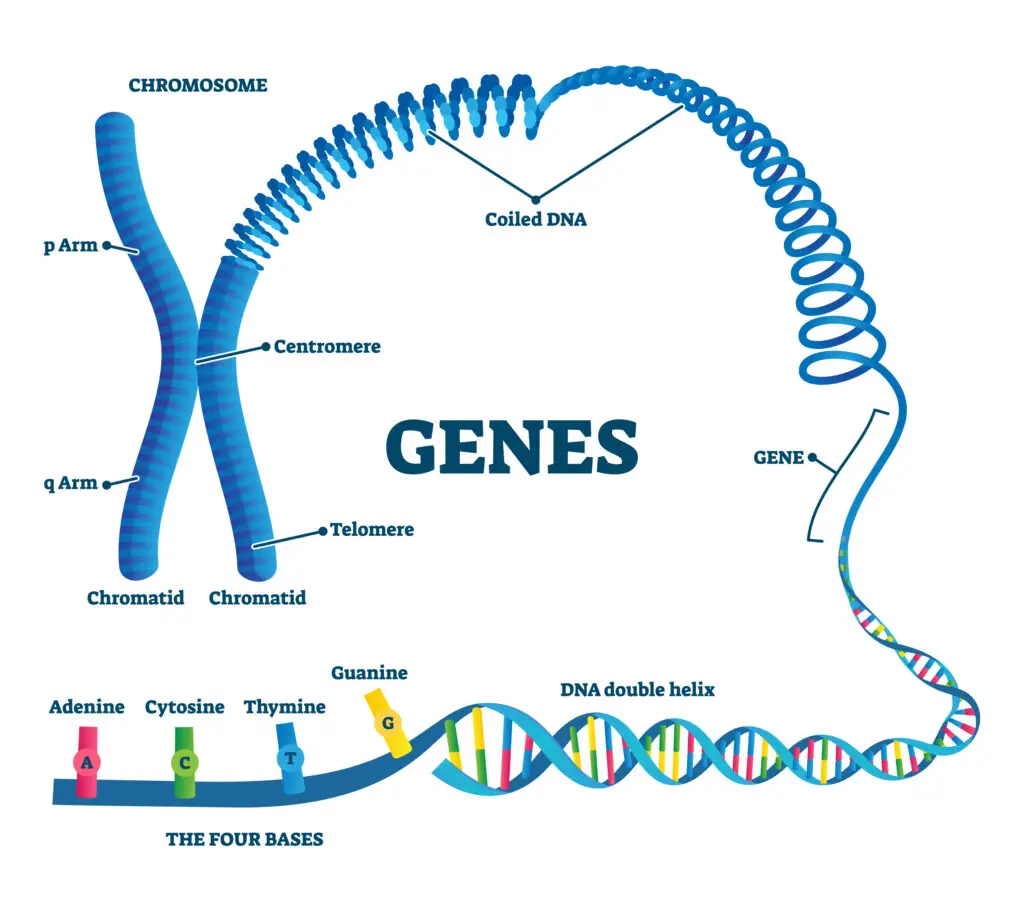Gene
What is a Gene?
A gene is a segment of DNA that contains the instructions for building a specific protein or performing a specific function within the cell. Genes determine an organism’s traits and are passed from one generation to the next.
Instructions for Life
Genes are like tiny instruction manuals inside your cells. Each gene tells the cell how to make specific proteins, which do important jobs like building tissues or fighting diseases. Genes are made of DNA and are located on chromosomes. Humans have about 20,000 to 25,000 genes, each controlling different traits like eye color or blood type. These instructions are passed from parents to children, making genes the foundation of inheritance.
How Genes Influence Traits
Genes determine many of your physical and biological traits. For example, a gene might control how tall you grow or what color your hair is. Sometimes, multiple genes work together to shape a single trait. Environmental factors, like diet or exercise, can also influence how genes express themselves. This combination of genetics and environment makes every person unique, even among siblings.
Genes and Proteins
Genes play a crucial role in protein production. When a cell needs a protein, the gene “turns on” and sends instructions via RNA to a ribosome. The ribosome uses these instructions to build the protein from amino acids. Proteins perform countless tasks, from repairing tissues to carrying oxygen in your blood. Without genes, cells wouldn’t know how to make the proteins they need to survive.
Mutations and Genetic Variation
Changes in genes, called mutations, can lead to differences in traits. Some mutations are harmless, like changes that cause unique eye colors. Others can lead to genetic disorders or diseases, like cystic fibrosis or sickle cell anemia. However, mutations also drive evolution, helping species adapt to new environments. Understanding mutations helps scientists explore both the risks and benefits of genetic variation.
Heredity & Medicine
Genes are at the center of many medical advances. Doctors study genes to understand hereditary diseases and create personalized treatments. For example, genetic testing can identify if someone is at risk for certain conditions, like cancer or heart disease. Gene therapy is another exciting area, where scientists modify or replace faulty genes to treat illnesses. These breakthroughs show how important genes are to modern medicine.
Genes are passed down from parents to offspring, making them the basis of heredity. Each parent contributes one copy of every gene, giving children a unique combination. This genetic mix explains why you might share traits with family members, but still look or act differently. Inheritance also follows patterns, like dominant and recessive traits. Studying these patterns helps scientists predict how traits are passed down through generations.
